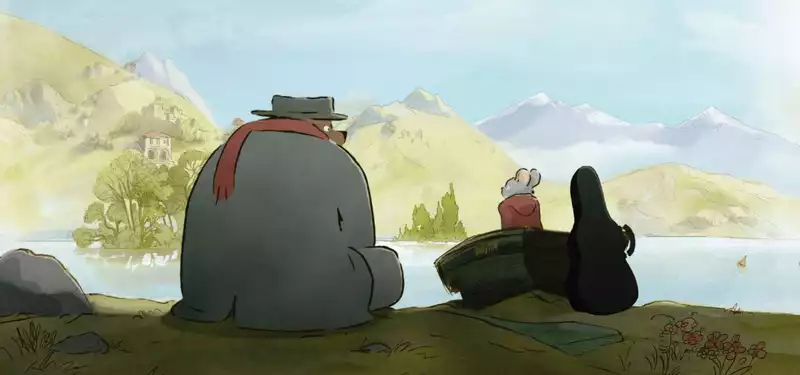Aug 30, 2023
Why - Ernest & Celestine- The story of the sequel relied on nailing character design- exclusive artwork.
Ernest & Celestine: A Journey to Giberitia, a feature-length sequel to the Oscar-nominated 2012 film Ernest & Celestine, will hit US theaters this Friday,9 May 1.
The original hand-drawn Ernest & Celestine film was adapted from Gabriel Vincent's picture book series and directed by a trio of Stefan Aubier, Vincent Putter and Benjamin Renner. After the success of this film, the cg series was produced in 2017. In 2022, Studiocanal released a sequel in France, produced by Folivari and Mélusine Productions. It went to win the nomination of the French Academy Cesar.
The producers recruited 2 of the directors of the animated series, Jean・Christophe Roger and Julian Chien, to direct the sequel. Chheng was also an artist in the original film, his first big animation work.
On a trip to Gibberitia, Celestine accidentally breaks Ernest's violin, meaning that the duo must travel to Ernest's native country of Gibberitia, where the only artist who can repair it lives. As soon as they arrive, the audience learns that they have a strict class system in which the son does the same job as the father and the daughter does the same job as the mother. At the stage of character design, the audience does not have to tell this fact about the Bear Society, because the artist was instructed that the character needs to look at all his parts and wear clothes.
We recently spoke with Chheng and Roger to discuss the transition from series to feature length, respect for younger viewers, and the importance of character design to storytelling. They also gave us exclusive access to many examples of character design art that led the production of the film.
Cartoon Brew: You were both working on an animated series, so the property is familiar to you. But did you feel any additional pressure to bring these characters back to the big screen-
Julien Chheng: We were under a lot of pressure artistically. From a personal point of view, I started my career working on my first film. It was a very talented team, directed by Benjamin Renner, so I learned a lot under his influence. So, we took this very seriously. I did not want to make another film just to make a sequel, so I spent a long time on the script.
Jean-Christophe and I directed 26 episodes of the Ernest & Celestine series together, so we were both ready to take on this new challenge, and we knew the characters well and knew what we wanted to do with the story. We also knew that our films were not so good when we tried to imitate the first film, so we immediately tried to do something different.
What did you do - New features that fans of the original and series are looking forward to-
Jean-Christophe Roger: Visually, the TV series was the first time in this film that Gabrielle Vincent portrayed in terms of the world, we had to create a whole new world. This is the first time I have shown giberitia. The story revolves around the idea that in Giberitia, boys have to do the same job as their father and girls have to do the same job as their mother. When designing a character, I asked myself how to create a world filled with characters that gives you a glance at what you're doing. It is essential to the story. All the characters of Gibberitia have this relationship between the story, design and career.
How was the production different from the previous work with Ernest & Celestine-
Roger: For the series, we used cg animation to create the look of the show because it was obviously lower budget than it would be for the movie. In this film, he continued to work with cg, injecting what he learned in the series. The budget for this film was a little lower than the first. Today, there has been a challenge of working with fewer resources, as it has become harder to fund such a feature. We have found a good process for this film that can work efficiently and quickly.
and how did these differences appear during production -
Chheng: The first film took place in Adobe Flash. When we were animating, the lines were perfect. The final image on the screen ended with more textures; It was gritty, loose, rough. And it took a lot of post-processing. At the time, coloring was done in a flash, but it also took a lot of time and reduced the perfection to make it look like a watercolor.
In this film, I used TVPaint and immediately animated it with a line brush that looks like the last line brush that appears on the screen. For color, it was the same process. From the beginning I was able to color the animation with watercolor touch. So it was more direct.
.



Post your comment